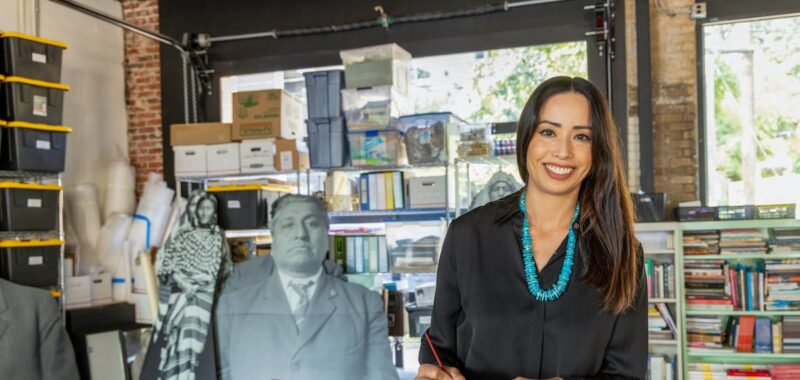
Visual artist Wendy Red Star is one of the John D. and Catherine T. MacArthur Foundation’s 2024 Fellows.
John D. and Catherine T. MacArthur Foundation
The John D. and Catherine T. MacArthur Foundation announced Tuesday its 2024 class of fellows – often known as recipients of the âgenius grant.â
The list includes Wendy Red Star, an Apsáalooke artist based in Portland. Red Starâs work seeks to reclaim images of Native Americans from history by creating, beading, sewing, building, configuring and then photographing finished sculptures, paintings and prints.
OPB spoke with Red Star about the fellowship and what it will mean for her work.
The following transcript has been edited for clarity and length.
How it felt to be awarded a MacArthur Fellowship:
It was kind of funny because they had a ruse where they had emailed me and asked if I would be able to give my feedback on another artist and they didnât give the artistâs name. So I emailed them back and said, âOf course.â
In that email, theyâre like, âDo you have a place where you can have a confidential conversation?â So the next day I had a meeting, I was in my backyard, it was confidential. And they said âWeâre sorry, we kind of made this ruse, but youâre the artist that we are recommending.â
It took me like a few seconds to understand and then I was a little bit shell shocked. So itâs been kind of a very surreal situation.
How Red Star describes her work:
As Iâve matured in my practice Iâve started to sort of understand what it is that Iâm called to do within the work. What Iâm very excited about is to build an art historical canon for Apsáalooke aesthetics. To research that, share that, elevate it. So all of my work pertains to where I come from. My background, identity and the history that has molded me.
Related: Watch: Wendy Red Star on Oregon Art Beat
On how the $800,000 award will affect her life and work over the next five years:
Whatâs amazing is Iâve been self-employed since 2016 and Iâve at times stared down a blank calendar wondering if Iâll get an opportunity. So far things do come in, but itâs sort of this anxiety dance that you have to do as a self-employed person and as an artist.
Itâs a lot of pressure. Itâs all on you to come up with ideas, to have people be invested in those ideas and support. So itâs just really wonderful to have a sense of stability for five years that Iâve never really had as a self-employed artist.
On what itâs like to be part of a legacy of Indigenous fellows:
Well, it feels wonderful. But I think for me as a teenager, I remember hearing about the MacArthur, which you wouldnât necessarily think growing up in Montana on the Crow Indian reservation that I would know about the MacArthur.
But I knew about it because a tribal member, Janine Pease Windy Boy, received it in the nineties for starting the Little Big Horn College. Which has really reshaped the community. It has gifted so many Apsáalooke with an opportunity to learn and grow. So Iâve always admired Janine and always, like, âSheâs a geniusâ and just was like, âWow, thatâs amazing.â
And so that caliber Iâm just sort of humbled and just so so excited to share in that legacy actually with Janine and my tribe being the two tribal members who are women who have received this great honor. So thatâs the thing Iâm kind of floating around. Thinking about that and that legacy of being with her and making our community proud.
Related: Watch: Oregon Art Beat ‘Crow’s Shadow’

